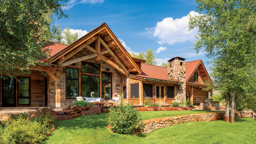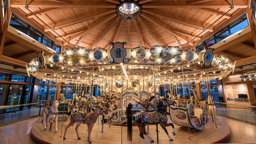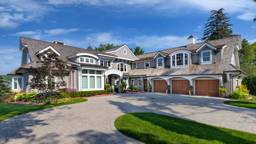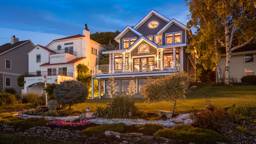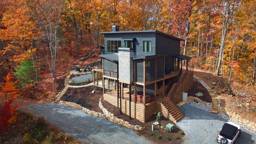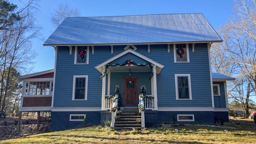
A Gothic stained glass window in the third-floor loft room contrasts with the traditional small, square windows of the restored timber frame barn and a cow weathervane tops the cupola.
On the Hunt
The Horners looked through Heritage’s inventory of old barns and chose a 34-by-45-foot English timber frame barn dating from the 1830s. The barn, which was originally built in central New York and used for hay storage, was framed with heavy hemlock timbers. The timber frame had five bents (vertical cross-sections of interlocking posts and beams) that, when raised and connected together, would create a space with four delineated areas called bays. The process of dismantling, shipping and restoring old timber frame barns like the Horners’ is painstaking. “We carefully unpeg the timbers to take them apart and then number the timbers,” explains Kevin, a New Jersey native with a love of history and old buildings. “We ship them to our plant by truck, then unload and gently wash the timbers. We make any repairs using other reclaimed wood of the same type and time period, then lay out the timbers and put the timber frame barn together again.”Working with Heritage’s designer, the Horners chose to retain the barn’s original dimensions, crafting it into a three-level, 2,100-square-foot home. Two-thirds of the home is a 30-by-33-foot great room, open to the home’s 30-foot rafters, and capped by a cupola that provides light and ventilation. A massive hemlock post and beam runs across the timber frame barn’s 34-foot width; a 45-foot beam spans its length.

The third level of this timber frame barn contains a large loft room with a window that overlooks the great room. Wood walls and ceilings maintain an authentic barn feel.
Melinda’s biggest challenge was choosing where to place the windows and doors. Once the timber frame barn was erected and covered with structural insulated panels, she walked through to see both how the windows would look from the exterior, and how they would work with the interior space. She also decided to primarily use windows that are small and square. “I felt it was more traditional for a barn and I wanted to maintain an authentic look,” she says. She also wanted ample wall space to display artwork.
Great Open Spaces
The Horners paneled the great room ceiling and walls with 100-year-old Southern pine still bearing the original patina. In front of their Arkansas stone fireplace, they hung a wrought-iron chandelier made by craftsmen in Heritage’s workshops. The fixture, an “extra” from a project for a church, had been left outside and was rusting, but Melinda wanted it. “It was huge and rusty and I liked it,” she says.
A wrought-iron chandelier highlights the kitchen's antique pressed tin ceiling and rustic post and beams. A pine table on casters serves as a moveable cooking island in front of the unusual, 11-foot pine cabinet that faces the great room.
Seeking to “keep things simple,” the couple bought unfinished cabinets from a surplus warehouse, had them painted to look distressed, then topped them with multi-colored slate countertops. But the rest of the kitchen is far from simple. The appliances are high-end, including a Viking range and Sub Zero refrigerator. The kitchen ceiling is unique, made from pressed tin out of an 1800s church, complete with rust and peeling white paint. “We kept it rusty… I like that authentic look,” says Melinda, noting the tin was simply sealed and installed.

The dining area is close enough to the great room's fireplace to allow diners to enjoy its warmth. The fireplace is made of Arkansas stone, with a limestone mantel, where a French-made paper maiche cow holds court.





